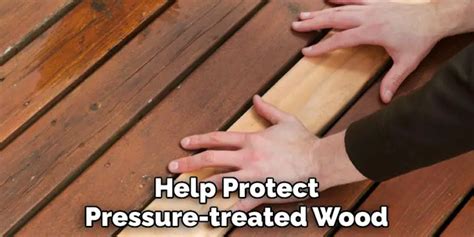How To Keep Pressure Treated Lumber From Warping
Ronan Farrow
Mar 25, 2025 · 3 min read

Table of Contents
How to Keep Pressure Treated Lumber From Warping
Pressure-treated lumber is a popular choice for outdoor projects due to its durability and resistance to rot and insects. However, it's prone to warping, twisting, and cupping, which can ruin the aesthetics and structural integrity of your project. Understanding the causes of warping and implementing preventative measures is crucial for a successful outcome. This comprehensive guide will equip you with the knowledge and techniques to minimize warping and maximize the lifespan of your pressure-treated lumber.
Understanding the Causes of Warping in Pressure Treated Lumber
Several factors contribute to the warping of pressure-treated lumber. Knowing these causes is the first step towards effective prevention.
Moisture Content:
The biggest culprit is uneven moisture content. Pressure-treated wood contains a significant amount of moisture. If one side of the lumber dries faster than the other, it shrinks unevenly, leading to warping. This is exacerbated by exposure to direct sunlight and fluctuating temperatures.
Improper Storage:
Storing pressure-treated lumber incorrectly can significantly increase the risk of warping. Leaving lumber exposed to the elements, especially direct sunlight and rain, can cause rapid and uneven drying. Proper storage involves stacking boards with air circulation between them, preferably under cover in a shaded and dry area.
Lack of Acclimation:
Before using pressure-treated lumber in your project, it's essential to allow it to acclimate to its intended environment. This involves letting the lumber sit for several days or even weeks, depending on the size and thickness, to allow it to reach a more stable moisture content. This reduces the likelihood of warping after installation.
Wood Species and Grade:
Certain wood species are more prone to warping than others. Additionally, lower grades of lumber often have more inherent imperfections that increase the risk of warping. Choosing higher-grade lumber from species known for better stability can help mitigate this issue.
Preventing Warping: Practical Tips and Techniques
Now that we understand the causes, let's explore effective prevention strategies.
Proper Storage is Paramount:
- Stacking: Always stack lumber off the ground, using spacers between layers to allow for air circulation.
- Covering: Protect the stacked lumber from direct sunlight and rain with a tarp or other suitable covering. Avoid using plastic sheeting as it can trap moisture.
- Location: Store lumber in a well-ventilated, shaded area.
Acclimation is Key:
- Allow Time: Give the lumber ample time to acclimate to the surrounding environment before using it in your project. Several weeks is often recommended, particularly in humid or dry climates.
- Monitor Moisture: Use a moisture meter to check the moisture content regularly. Aim for a moisture level that is appropriate for your region and the type of wood.
Construction Techniques to Minimize Warping:
- Plan Your Cuts: Ensure your cuts are straight and precise to prevent uneven drying.
- Proper Fastening: Use appropriate fasteners and avoid over-tightening, which can put undue stress on the wood.
- Finish Application: Applying a sealant or finish can help to regulate moisture content and protect the wood from the elements, reducing the risk of warping. Choose a high-quality, exterior-grade finish.
Choosing the Right Lumber:
- Species: Research different pressure-treated wood species and select those known for better dimensional stability.
- Grade: Opt for higher grades of lumber, which typically have fewer imperfections and are less prone to warping.
Conclusion: A Straight Path to Success
By understanding the causes of warping and employing the preventive measures outlined above, you can significantly reduce the risk of warped pressure-treated lumber in your projects. Remember, proper storage, acclimation, and mindful construction techniques are key to achieving straight, durable results that will last for years to come. Investing time in these preventative steps will save you time, money, and frustration in the long run.
Featured Posts
Also read the following articles
| Article Title | Date |
|---|---|
| How To Keep Mice Out Of Camper During Storage | Mar 25, 2025 |
| How To Measure Window Glass | Mar 25, 2025 |
| How To Prevent Windshield From Cracking | Mar 25, 2025 |
| How To Make A Swollen Jaw Go Down | Mar 25, 2025 |
| How To Measure Fuel Line Size | Mar 25, 2025 |
Latest Posts
Thank you for visiting our website which covers about How To Keep Pressure Treated Lumber From Warping . We hope the information provided has been useful to you. Feel free to contact us if you have any questions or need further assistance. See you next time and don't miss to bookmark.
